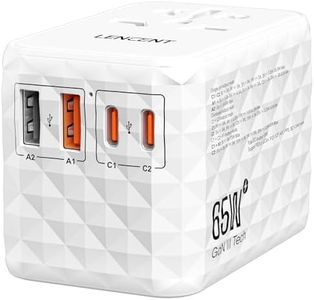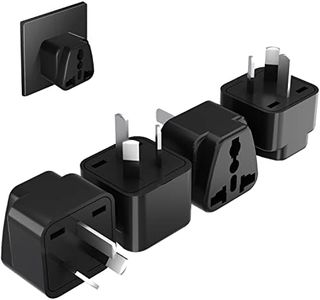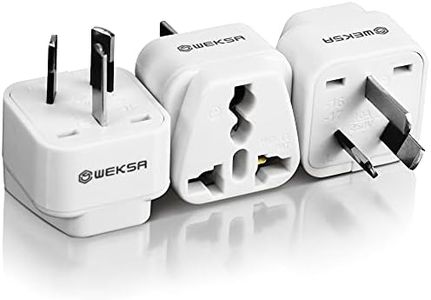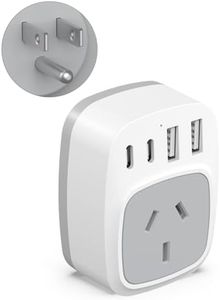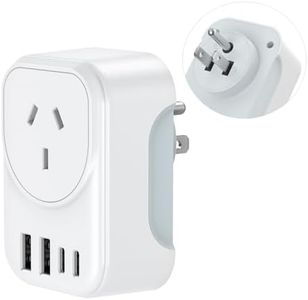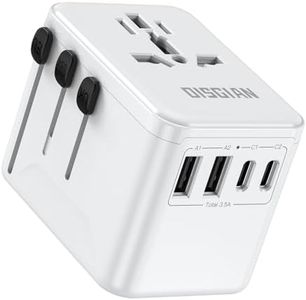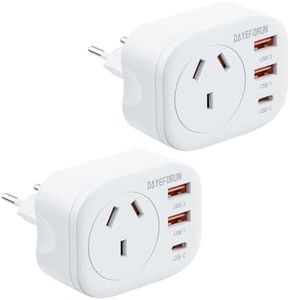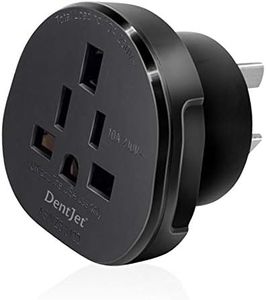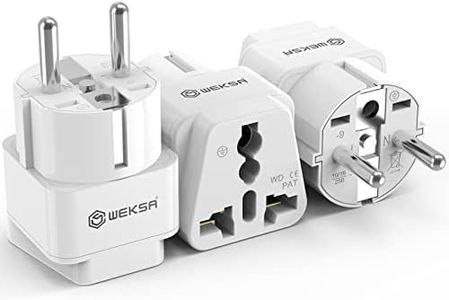We Use CookiesWe use cookies to enhance the security, performance,
functionality and for analytical and promotional activities. By continuing to browse this site you
are agreeing to our privacy policy
10 Best Travel Power Converters
From leading brands and best sellers available on the web.Buying Guide for the Best Travel Power Converters
Choosing the right travel power converter may seem a bit daunting, but with a clear understanding of what you need, it becomes much simpler. Power converters are essential for travelers who carry electronic devices when visiting countries with different voltage and plug types. The main function of a travel power converter is to adapt both the physical plug and the electrical voltage so your devices are safe and functional abroad. Selecting a suitable model involves matching your needs with the right features and understanding which specifications truly matter.Voltage CompatibilityVoltage compatibility refers to the range of voltages a power converter can handle, and it’s crucial because different countries use different voltages (commonly 110-120V or 220-240V). A converter that offers dual voltage support means it can safely adapt devices between these ranges. When selecting one, ensure it covers both the voltage of your destination and your device. For travelers visiting multiple regions, a broader compatibility (100-240V) is optimal. Choose according to the voltages you’ll encounter and always double-check your device’s specifications—some already have built-in voltage adaptability and may only need a plug adapter.
Wattage CapacityWattage capacity indicates the maximum power the converter can safely handle, which is important to prevent overheating or damage to your devices. Low-capacity converters (around 50-100W) are suitable for small electronics like phones or cameras, while higher-capacity models (200W or more) are needed for larger items like hair dryers or laptops. To pick the right wattage, check the power requirements of each device you want to use abroad and ensure the converter’s maximum output can handle your most demanding item.
Plug Types SupportedPlug types refer to the physical shape and configuration of outlet pins that correspond to different countries. A travel power converter may offer several plug types, either through interchangeable adapters or a multi-port design. If you’re visiting multiple countries, a universal model with various plug options makes traveling easier. To select the best one, look up the plug type(s) used in your destinations and match them to the converter’s supported adapters.
Size and PortabilitySize and portability describe how compact and easy the converter is to carry. If you are a frequent traveler or prefer to pack light, a lighter and smaller converter is often ideal. Some models are pocket-sized and perfect for a minimal setup, while others are bulkier but offer more ports. Assess how much luggage space you can spare, and whether you’ll need to convert power in hotel rooms or on the go.
Safety FeaturesSafety features in power converters—such as surge protection, temperature control, and fuse systems—help protect your devices and the converter itself from malfunction or damage caused by voltage inconsistencies. Look for models with built-in fuses or automatic shut-off if safety is a concern or if you’re using sensitive electronics. Consider your device’s value and how much peace of mind these protections would give you when deciding which safety features are important.
Number and Type of Output PortsThe number and type of output ports determine how many devices you can charge at once and which devices are compatible (USB, AC, etc.). Some travelers may only need to charge one phone at a time, while others require multiple ports for tablets, cameras, and laptops. Pick a converter that meets your charging needs based on the number and types of devices you commonly use on trips.





